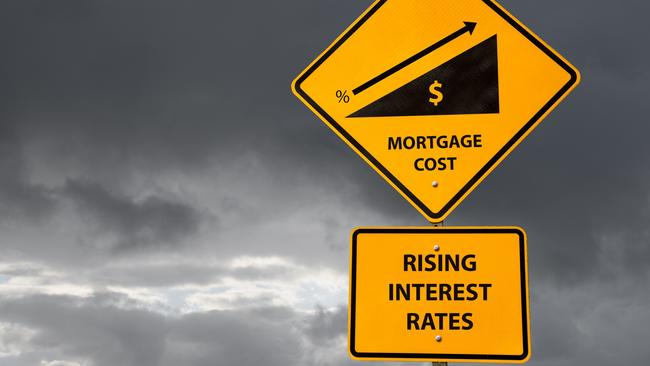Number of Aussies falling behind on their mortgage payments is growing, says Moody’s
Moody’s Ratings says mortgage delinquencies will continue to rise as Australians are squeezed by inflation and interest rates.

Business
Don't miss out on the headlines from Business. Followed categories will be added to My News.
Moody’s Ratings says mortgage delinquency rates in Australia will rise further this year as the cost of living hurts households.
Moody’s said high interest rates and sticky inflation were causing financial stress and more people were falling behind in their mortgage payments.
It said the share of prime-quality home loans that were at least 30 days in arrears increased marginally to 1.73 per cent in June from 1.72 per cent in March.
Delinquency rates for lower quality mortgages, including loans to borrowers with poor credit histories or those that lenders assessed using alternative documentation, rose to 4.23 per cent in June from 4.01 per cent in March. This cohort includes self-employed borrowers, low-income homeowners and those with high loan-to-value ratio mortgages.
“We expect high interest rates and cost-of-living pressures will continue to weigh on households over the rest of this year, pushing mortgage delinquencies higher,” Moody’s said.
Inflation, while easing to 3.5 per cent over the year to July from 3.8 per cent over the 12 months to June, remains above the Reserve Bank’s 2-3 per cent target band, signalling interest rates will remain elevated this year.
Moody’s said that after rising steadily for the last two years from a historically low base, delinquency rates were now around long-term averages. Several mitigating factors meant mortgage delinquency rates would not rise at a faster clip.

Firstly, while Australia’s unemployment rate increased to 4.2 per cent in July from 4.1 per cent in June, employment conditions remain sound. Also, nominal wages are increasing, with average weekly household earnings growing 6.5 per cent over the year to May.
Furthermore, house prices have increased 7 per cent over the eight months to August and are now above the pandemic peak, which will support collateral values. Reserve Bank governor Michele Bullock recently said that while only about 5 per cent of borrowers were at risk of falling behind on their mortgage repayments, she acknowledged that some people might have to sell their homes because of interest rate rises.
However, staring down demands to deliver rate relief, Ms Bullock dismissed discussion of rate cuts as “premature”, given stubborn underlying price pressures despite weak economic growth. The comments came after Treasurer Jim Chalmers pointed the finger at the central bank for hammering growth ahead of weak GDP figures – 1 per cent gain over the 12 months to June, despite record government spending.
CommSec economist Tom Piotrowski said there was a “groundswell of optimism” the US Federal Reserve could cut interest rates by as much as half a per cent. “The probability of that is trading at about 60 per cent at the moment,” Mr Piotrowski told Sky News Australia. “It has jumped quite a bit over the course of the last week.”
Judo Bank chief economic adviser Warren Hogan has predicted there will be a rate hike in Australia in November.
More Coverage
Originally published as Number of Aussies falling behind on their mortgage payments is growing, says Moody’s





